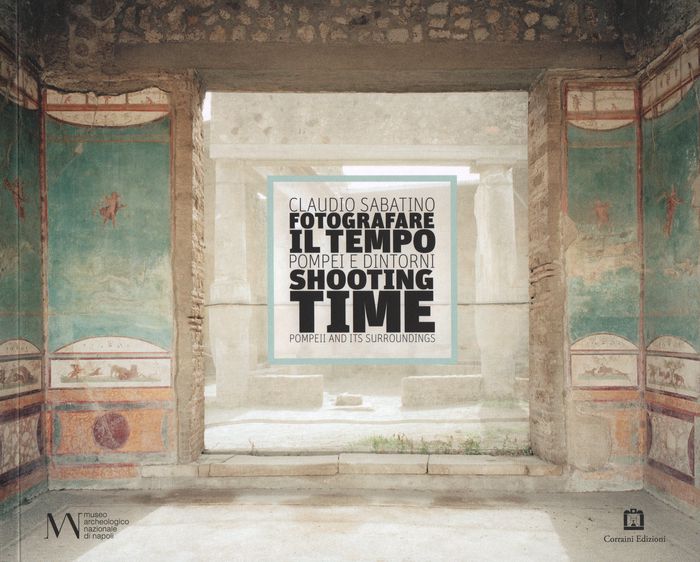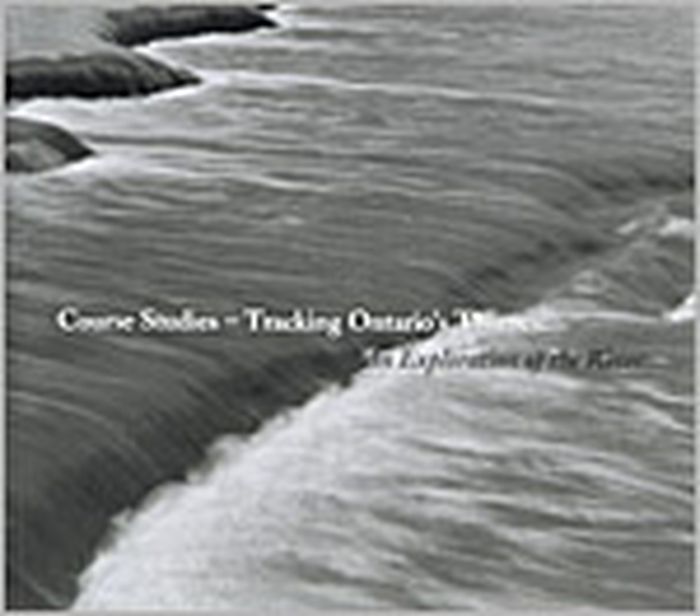$97.50
(available to order)
Summary:
The positive effects of urban green spaces are well-known, ranging from the promotion of health, support of biodiversity to climate regulation. However, the practical implementation of urban landscapes is less discussed. How can we make these spaces functional, economically feasible and inclusive, especially as cities become more diverse? The publication explores(...)
August 2019
Urban landscapes in high-density cities: parks, streetscapes, ecosystems
Actions:
Price:
$97.50
(available to order)
Summary:
The positive effects of urban green spaces are well-known, ranging from the promotion of health, support of biodiversity to climate regulation. However, the practical implementation of urban landscapes is less discussed. How can we make these spaces functional, economically feasible and inclusive, especially as cities become more diverse? The publication explores strategies to reconcile the various demands, such as food production, resilience and nature conservation. Indeed, urban landscapes have to be restorative, ecological and aesthetically pleasing at the same time. This is a particular challenge in high-density cities like Singapore, Seoul or New York where space is a scarce commodity. The continuing growth of the worldwide urban population imbues the topic with a special urgency.
Shanghai: new botanic garden
$47.00
(available to order)
Summary:
To propose a botanical garden in one of the world's most rapidly expanding cities is of course a gesture that invokes ecological issues regarding sustainability and the conservation of plant life. The German landscape architect's planning group Valentien intend the garden that they are constructing, for Chenshan (Hill Chen) in the Song Jiang District of Shanghai (just(...)
Shanghai: new botanic garden
Actions:
Price:
$47.00
(available to order)
Summary:
To propose a botanical garden in one of the world's most rapidly expanding cities is of course a gesture that invokes ecological issues regarding sustainability and the conservation of plant life. The German landscape architect's planning group Valentien intend the garden that they are constructing, for Chenshan (Hill Chen) in the Song Jiang District of Shanghai (just outside the city center), to be such a gesture, as well as a model of plant conservation and scientific research development-and one of Shanghai's most ambitious landmarks. The project is enormous, and informed throughout by the architects' ecological imperatives: Energy-saving technologies are to be utilized in the garden's buildings (greenhouses, laboratories and education center) and renewable materials will be deployed throughout.
Gardens
books
Description:
221 pages : illustrations (some color), plans ; 30 cm
Basel, Switzerland : Birkhäuser, [2020], ©2020
New move : architecture in motion -- new dynamic components and elements / Michael Schumacher, Michael-Marcus Vogt, Luis A. Cordón Krumme ; translation, Julian Reisenberger.
Actions:
Holdings:
Description:
221 pages : illustrations (some color), plans ; 30 cm
books
Basel, Switzerland : Birkhäuser, [2020], ©2020
$37.95
(available to order)
Summary:
''Canadian environmental philosophy'' is the first collection of essays to take up theoretical and practical issues in environmental philosophy today, from a Canadian perspective. The essays cover various subjects, including ecological nationalism, the legacy of Grey Owl, the meaning of 'outside' to Canadians, the paradigm shift from mechanism to ecology in our(...)
Environment and environmental theory
May 2019
Canadian environmental philosophy
Actions:
Price:
$37.95
(available to order)
Summary:
''Canadian environmental philosophy'' is the first collection of essays to take up theoretical and practical issues in environmental philosophy today, from a Canadian perspective. The essays cover various subjects, including ecological nationalism, the legacy of Grey Owl, the meaning of 'outside' to Canadians, the paradigm shift from mechanism to ecology in our understanding of nature, the meaning and significance of the Anthropocene, the challenges of biodiversity protection in Canada, the conservation status of crossbred species in the age of climate change, and the moral status of ecosystems. This wide range of topics is as diverse and challenging as the Canadian landscape itself.
Environment and environmental theory
Eth Yearbook 2010
$42.00
(available to order)
Summary:
This book includes student work from the courses of study in architectural design, technology and visual design at the Faculty of Architecture of the ETH, Zurich. It describes the entire breadth of approaches and disciplines which characterise the school. The work featured was produced in the previous year in the semester studios as part of a thesis project or in one of(...)
Eth Yearbook 2010
Actions:
Price:
$42.00
(available to order)
Summary:
This book includes student work from the courses of study in architectural design, technology and visual design at the Faculty of Architecture of the ETH, Zurich. It describes the entire breadth of approaches and disciplines which characterise the school. The work featured was produced in the previous year in the semester studios as part of a thesis project or in one of the Master of Advanced Studies programmes (MAS), but also in academic exchange programs between: The Institute for the History and Theory of Architecture (gta); The Institute for Building Technology (HBT); The Institute for Historic Building Research and Conservation (IDB); The Network City and Landscape (NSL) with the ETH Studio Basel/Contemporary City Institute; The Institute for Urban Design (ISB). The Institute for Landscape Architecture (ILA) also present selected works of their teaching and research activities.
Contemporary Architecture
$45.95
(available in store)
Summary:
The exhibition “Shooting Time. Pompeii and its Surroundings” by Claudio Sabatino allows us to reflect, in a museum such as the Archaeological Museum of Naples, on the tricky issue of the relationship between archaeological context, landscape and the finds that come from them. Preventing the gradual process of change, the result of human interaction, of the remaining(...)
Shooting time: Pompeii and its' surroundings
Actions:
Price:
$45.95
(available in store)
Summary:
The exhibition “Shooting Time. Pompeii and its Surroundings” by Claudio Sabatino allows us to reflect, in a museum such as the Archaeological Museum of Naples, on the tricky issue of the relationship between archaeological context, landscape and the finds that come from them. Preventing the gradual process of change, the result of human interaction, of the remaining landscape would be pure utopia. That it also generates a culture of respect, which goes from a deep knowledge of history and allows for conscious protection, is another. This catalogue allows us to examine how in many symbolic places symbol (Baths of Caracalla, Pompeii, Naples, The Phlegraean Fields), there is an often antithetical ‘before’ and ‘after’, which reveal, on one side, the yielding of a conservation effort in the face of building expansion policies and, on the other, from the fact that in Italy there has been greater attention on the exhibition sites rather than on the territory.
Photography by Region
$18.95
(available to order)
Summary:
In many ways one can gauge the history of Canada by its rivers. By telling the story of one of the country's key arteries, Kapelos captures and communicates our collective past and present. By imitating the river's meandering course he guides the reader through the experiences of early explorers and the first European settlements, the continued presence of First Nations(...)
Photography monographs
January 2001, London, Ontario
Courses studies - tracking Ontario's thames : an exploration of the river
Actions:
Price:
$18.95
(available to order)
Summary:
In many ways one can gauge the history of Canada by its rivers. By telling the story of one of the country's key arteries, Kapelos captures and communicates our collective past and present. By imitating the river's meandering course he guides the reader through the experiences of early explorers and the first European settlements, the continued presence of First Nations peoples, the growth of industry and tourism and the contemporary establishment of a Conservation Authority. Accompanied by period paintings, photographs, maps and historical documentation. Toronto artist Steven Evans spent a year photographing sites along the Thames and the 60 black and white reproductions included here stand on their own as elegant and perceptive landscape photography.
Photography monographs
100 Copenhagen typologies
$80.00
(available in store)
Summary:
"100 Copenhagen typologies" presents 100 examples of re-use, adaptation and mixed-use architecture. In this book, Martin Marker and his students from The Royal Danish Academy - Architecture, Design, Conservation at the Institute of Architecture, Urbanism and Landscape - BA Programme investigate Copenhagen as a Wunderkammer of architectural typologies. Leaving the focus on(...)
100 Copenhagen typologies
Actions:
Price:
$80.00
(available in store)
Summary:
"100 Copenhagen typologies" presents 100 examples of re-use, adaptation and mixed-use architecture. In this book, Martin Marker and his students from The Royal Danish Academy - Architecture, Design, Conservation at the Institute of Architecture, Urbanism and Landscape - BA Programme investigate Copenhagen as a Wunderkammer of architectural typologies. Leaving the focus on materiality and visual aesthetics aside, the book explores how programmatic complexities and existing structures can form foundations for future urbanism in a rapidly changing world with a growing population, climate changes, and limited resources. This book extends a welcoming invitation to explore and examine our urban structures, sparking a vital conversation that encourage a fresh perspective on our existing typologies, ensuring their continued relevance for the people who inhabit them.
Architecture since 1900, Europe
$94.50
(available to order)
Summary:
This volume is a comprehensive monograph chronicling the personal and professional journey of the Indian architect and urban conservationist Brinda Somaya, from 1975 to the present. Belonging to the 'Bridge Generation', her work transcends stylistic vocabulary and draws its inspiration from Indian culture, the landscape of the subcontinent and principles of sustainable(...)
Architecture Monographs
September 2018
Brinda Somaya: Works and Continuities
Actions:
Price:
$94.50
(available to order)
Summary:
This volume is a comprehensive monograph chronicling the personal and professional journey of the Indian architect and urban conservationist Brinda Somaya, from 1975 to the present. Belonging to the 'Bridge Generation', her work transcends stylistic vocabulary and draws its inspiration from Indian culture, the landscape of the subcontinent and principles of sustainable design and intervention. The book explores a cross-section of Somaya's diverse typology of projects, including housing, institutions, conservation, urban design, social design and industrial works that represent a unique 'non-stylistic' grammar that has a sense of 'order and appropriateness'. Situating her work in a broader context, the essays in this volume offer multiple perspectives on Somaya's accomplishments, while the dialogues outline the concerns central to her work.
Architecture Monographs
books
$25.00
(available to order)
Summary:
Ecologies of Urbanism in India explores how rapidly proliferating and resource-intensive urbanism affects everyday lived environments and the ecological processes that undergird them in Indian cities. Case studies on nature conservation in the city, urban housing and slum development, waste management, the history and practice of urban planning, and contestations over(...)
Ecologies of urbanism in India: metropolitain civility and sustainability
Actions:
Price:
$25.00
(available to order)
Summary:
Ecologies of Urbanism in India explores how rapidly proliferating and resource-intensive urbanism affects everyday lived environments and the ecological processes that undergird them in Indian cities. Case studies on nature conservation in the city, urban housing and slum development, waste management, the history and practice of urban planning, and contestations over the quality of air, water, and sanitation in the major cities of Delhi and Mumbai, illuminate the urban ecology perspective at different points across the twentieth century. The book therefore examines how struggles over the environment and quality of life in urban centers are increasingly framed in terms of their future place in a landscape of global sustainability, and the future relationship between cities and their changing hinterlands.
books
February 2013
Arch Middle East







